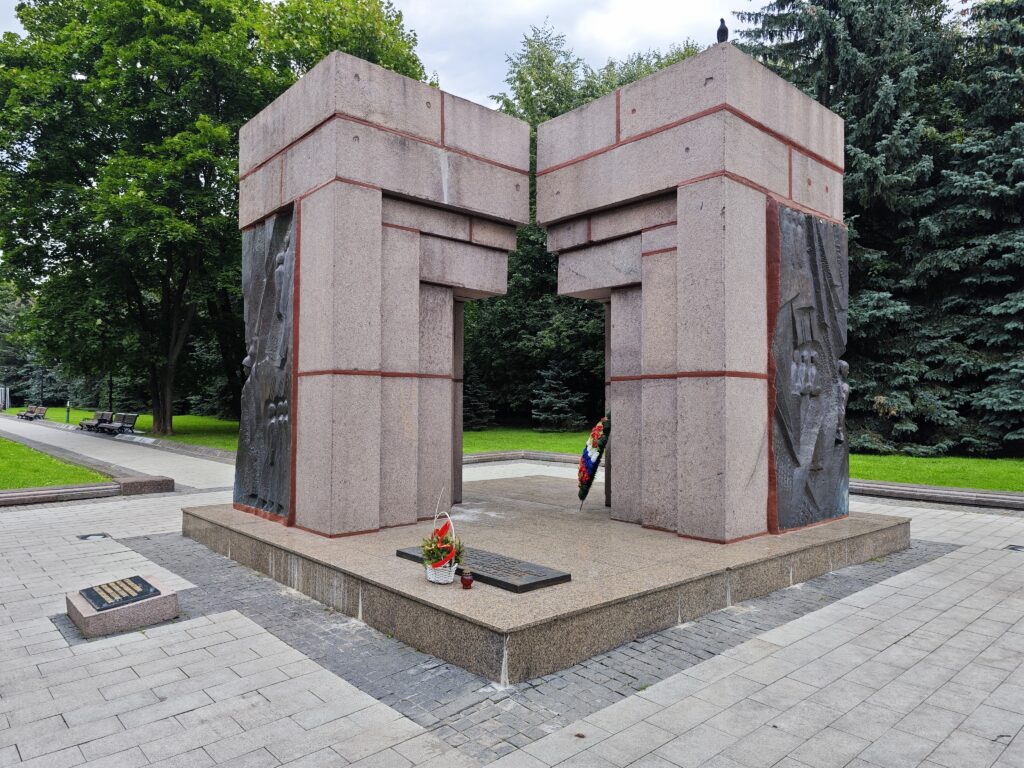Monument «Gates of Victory» to Volunteers of the 13th and 6th Divisions of the People’s Militia Defending Moscow

The monument «Gates of Memory»is located in Ostankino Park in memory of the feat of volunteers of the 13th Rostokinskiy (140th Rifle Division) and 6th Dzerzhinskiy (160th Rifle Division) divisions of the People’s militia, who defended Moscow from the Nazi invaders. The monument was erected at the expense of local residents. The monument was designed by sculptor S.M. Babayan and architect S.M. Sutyagin, the son of the former commissar of the 37th (1737th) Rifle Regiment of the 13th Division of the People’s Militia M.V. Sutyagin. In the first hours and days after the attack of nazi Germany on the Soviet Union and the beginning of the Great Patriotic War, meetings of workers and employees took place at the plants and factories of Moscow (Dynamo, Sergo Ordzhonikidze, Krasnaya Roza, Bolshevichka, etc.). Muscovites with anger and indignation condemned the aggressors and expressed their readiness to stand up for the Motherland with their breasts. Thousands of people, for various reasons not subject to mobilization, demanded immediate dispatch to the front in order to personally take part in the armed struggle with the enemy. The flow of such statements increased every day. It was envisaged to mobilize in the division of the people ‘s militia. There were 200 thousand people in the city of Moscow and 70 thousand people in the Moscow region. The districts of the Moscow Region formed separate subdivisions and units and poured them into divisions at the direction of the headquarters of the Moscow Military District. The formation of the militia took place on a voluntary basis. It was planned that each of the 25 districts of the capital that existed at that time should form its own division of the people’s militia. By July 7, 1941, it was required to form 12 divisions in the capital. The age limit of the militia was from 17 to 55 years. Nevertheless, in practice older Muscovites also joined the militia. People signed up in the militia, regardless of their health and age, 16-year-old and even 15-year-old boys and girls, as well as elderly people who were over 60, and in some cases over 70 years old, aspired to the front. This is evidenced by the lists of militia members preserved in the archives. The requirement of the resolution of the Military Council of the Moscow Military District of July 2, 1941 was not always fulfilled about not accepting workers and employees of factories, People’s commissariats of armaments, ammunition, aviation industry, machine tool construction and other enterprises that carried out particularly important defence orders into the militia, in practice there were many employees of defence enterprises among the militia. Initially, the militia were not considered military personnel, and service in the people’s militia did not have the status of “military”. The militia and their families did not have the benefits due to the personnel of the Red Army. However, they retained the average earnings at their place of work, volunteers in their institutions, enterprises and organizations were officially listed as “having gone on a trip to the people’s militia.” The rank and file, junior staff, 50% of platoon commanders, up to 40% of company commanders, medical staff and the entire political staff were recruited from workers, employees and students of the districts. The rest of the commanding staff was completed due to the personnel of the Red Army.
Address: Moscow, Ostankino Park

